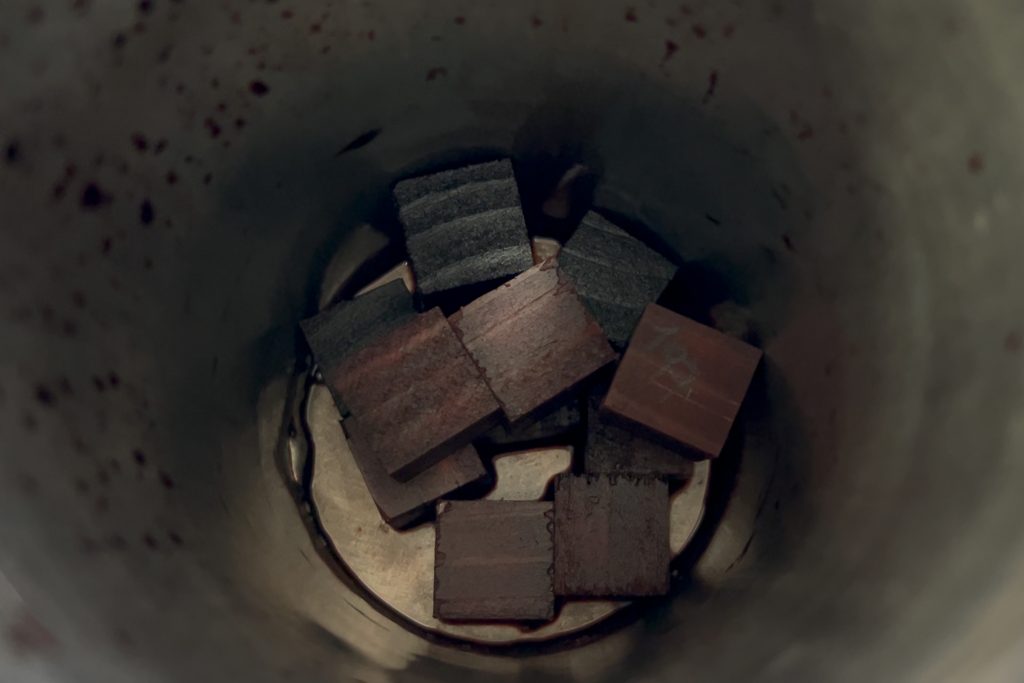The project from the Unidad de Desarrollo Tecnológico (UDT) at the University of Concepción utilizes pine and eucalyptus bark to obtain phenolic compounds with protective properties, including the potential to repel pests such as termites.
An innovative solution based on phenolic compounds extracted from pine and eucalyptus bark—abundant forestry by-products in the Biobío Region—serves as the raw material for an environmentally friendly solution with better features and lower toxicity for wood protection.
Proposed by the Unidad de Desarrollo Tecnológico (UDT) at the University of Concepción, the project, titled “Natural additive obtained from forestry by-products and incorporated into coatings to increase the durability of wood for interior and exterior use,” aims to promote the use of this by-product in construction while fostering the circular economy in the forestry sector.
The basis of this additive is phenolic compounds, a type of secondary metabolite produced by plants that participate in various physiological functions such as growth, reproduction, and defense against pathogens, predators, or ultraviolet radiation.
Conducted under the Fondef IDeA program, the initiative is led by UDT researcher and project engineer Dr. Cecilia Fuentealba Becerra, along with Dr. Danilo Escobar Avello and Dr. Víctor Ferrer Villasmil, and has partners including Codelpa and Bioforest.

“The use of phenolic compounds derived from bark mimics the natural process by which trees defend themselves against degradation factors, both biotic and abiotic, such as microorganisms and environmental exposure,” explains Dr. Danilo Escobar, Principal Investigator of the initiative and an expert in the extraction processes of phenolic compounds.
Chemical engineer and deputy project director, Dr. Víctor Ferrer, recounts that in the project’s first phase, the technology for extracting phenolic compounds was optimized by comparing the effectiveness of traditional and emerging extraction methods, such as ultrasound.
“Ultrasound extraction has been used for many years at the laboratory scale, but its productive scaling is more recent. This system significantly reduces process times and temperatures compared to traditional methods, helping preserve heat-sensitive phenolic compounds and improving process efficiency,” notes Dr. Ferrer.
Additionally, a real-time monitoring system was implemented to standardize and control the extract profiles—an essential feature for ensuring quality in an industrial production context.
Initial Results
The team has evaluated the efficacy of the extracts in specific tests against staining and decay fungi, as well as in UV radiation protection, with promising results.
“We have observed that extraction conditions significantly influence the bioactive profile of the extracts, allowing us to identify conditions with high antifungal activity comparable to commercial products. Regarding UV protection, one extract demonstrated wood photo-stabilization capabilities, extending its lifespan by reducing deterioration caused by sunlight exposure,” shares Dr. Ferrer.

Additionally, tests were conducted related to the enzyme acetylcholinesterase, a marker used to prevent pest damage. This extract suggests potential protective effects against termites.
“This solution not only demonstrates performance comparable to traditional products but also offers a sustainable and less toxic option to prolong wood durability for both interior and exterior applications,” asserts the specialist.

In characterizing the extracts, differentiated properties were identified between pine and eucalyptus.
“Each contributes bioactive compounds with specific functions. Some extracts show greater antifungal efficacy, while others excel in UV protection or termite inhibition. Additionally, certain compounds act as bio-mordants, improving product adhesion to wood,” Ferrer explains.
Therefore, the team has decided to explore the possibility of developing blends of extracts from both barks to achieve an optimal and versatile final product formulation.
In the coming months, the project will enter its second phase, which includes studies on incorporating the extracts as additives into a water-based wood protection paint formulation. Various formulations will be evaluated against decay fungi, UV radiation, and termites.
A life-cycle analysis and a techno-economic evaluation of the additive are also planned, the researcher concludes.

Source: Noticias UdeC

